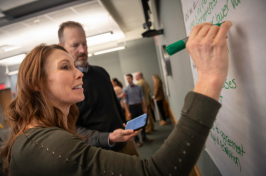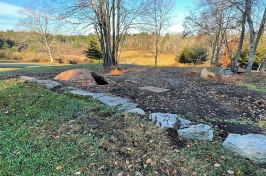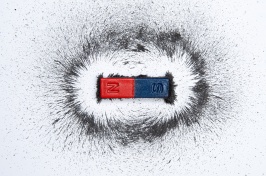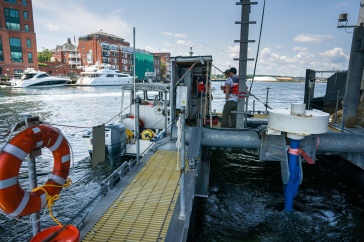
Since early February 2025, the federal government has sought to restrict the indirect costs funding agencies like the National Institutes of Health pay to grantees to as low as 15%. Marian McCord, senior vice provost for research, economic engagement and outreach at UNH, explains the implications of these proposed cuts and the ways UNH and other organizations are teaming up to address these new challenges.

What are indirect costs?
In federal grants, indirect costs are the actual costs of doing research that aren’t easily assignable to specific projects. They’re sometimes referred to as F&A, for facilities and administration. Indirect costs cover a share of infrastructure like lights, heat, Internet, shared research instruments — those would be the “facilities” part — as well as the costs of research administration. Research-intensive institutions like UNH all have a team of skilled staff who support researchers with creating and reporting on grant proposals, ensuring compliance with HIPAA and other ethical and safety concerns, keeping data safe and so much more.
Here at UNH, those indirect costs maintain infrastructure that enables our researchers to solve some of the state’s most pressing concerns. It funds fuel and tractors and greenhouses at our farms, where we’re innovating new crop varieties to advance New Hampshire’s agriculture. Our excellence in marine research — ocean mapping, aquaculture, marine energy and more — relies on shared facilities like research vessels and wave tanks.
Indirect costs cover real costs of doing research in a reasonably efficient way. You’re not going to build a power plant, buy a boat, or hire a veterinarian to oversee animal research for a single grant. This mechanism shares those costs to leverage and support the infrastructure of doing research.
Direct costs, on the other hand, are specific to a particular grant. They might include travel to field sites, technicians, equipment or supplies used in the research.
(Watch this explainer video from the Association of American Universities to learn more.)
How do indirect costs work in grants? How much are they?
UNH, like all institutions that receive federal grants, negotiates with the federal government every four years to develop an indirect cost rate that’s based on actual costs of doing research.
UNH’s negotiated rate is 53.5%, but because there are costs that are not eligible for indirect costs, we actually recover only about 23% of the total project costs. So that means that if a researcher receives a federal grant for $100,000, roughly $77,000 would be available for the actual costs of the research — and $23,000 would cover all those distributed infrastructure costs the university incurs. The university supports the remaining indirect costs of conducting research.
It's important to understand that when we receive a federal research grant, the granting agency doesn’t deposit the lump sum into our accounts: The university fronts the costs, then the government pays us back. So indirect costs are definitely not a “slush fund” that we can spend as we please; they are only available to cover the actual costs of doing research.
What would happen if indirect costs were capped at the 15% the federal government has proposed?
A 15% cap would be extremely difficult for UNH and other institutions that don’t have deep financial reserves. We stand to lose tens of millions of dollars, meaning we wouldn’t be able to do as much research or train as many students. Ultimately, that hurts innovation and national security.
Reducing the indirect rate doesn’t reduce cost of research, it just means we’ll be able to do less research. If we can’t get reimbursed, we can’t do the work.
At the same time the government is proposing lowering this cap for indirect costs, those expenses are increasing for universities. Federal regulations around compliance — ensuring safety for our researchers and subjects, maintaining the integrity of research, keeping data and intellectual property secure — are increasing, and for the most part we bear the expense of those increases beyond our indirect cost reimbursements.
What’s the path forward?
A team of representatives from academic and medical research organizations across the nation is working hard to develop new models for funding indirect costs. After soliciting feedback from the broader research community of universities and medical centers, this working group will present a model to government leaders.
For 80 years, the federal government has partnered with universities like UNH to do research and create new knowledge, with spectacular innovations and results that have made our country the educational and scientific envy of the world. We’re committed to finding a way to maintain and strengthen that important, trusted collaboration so we can continue to support the state of New Hampshire and the nation with research that improves lives.

-
Compiled By:
Beth Potier | UNH Marketing | beth.potier@unh.edu | 2-1566
















































